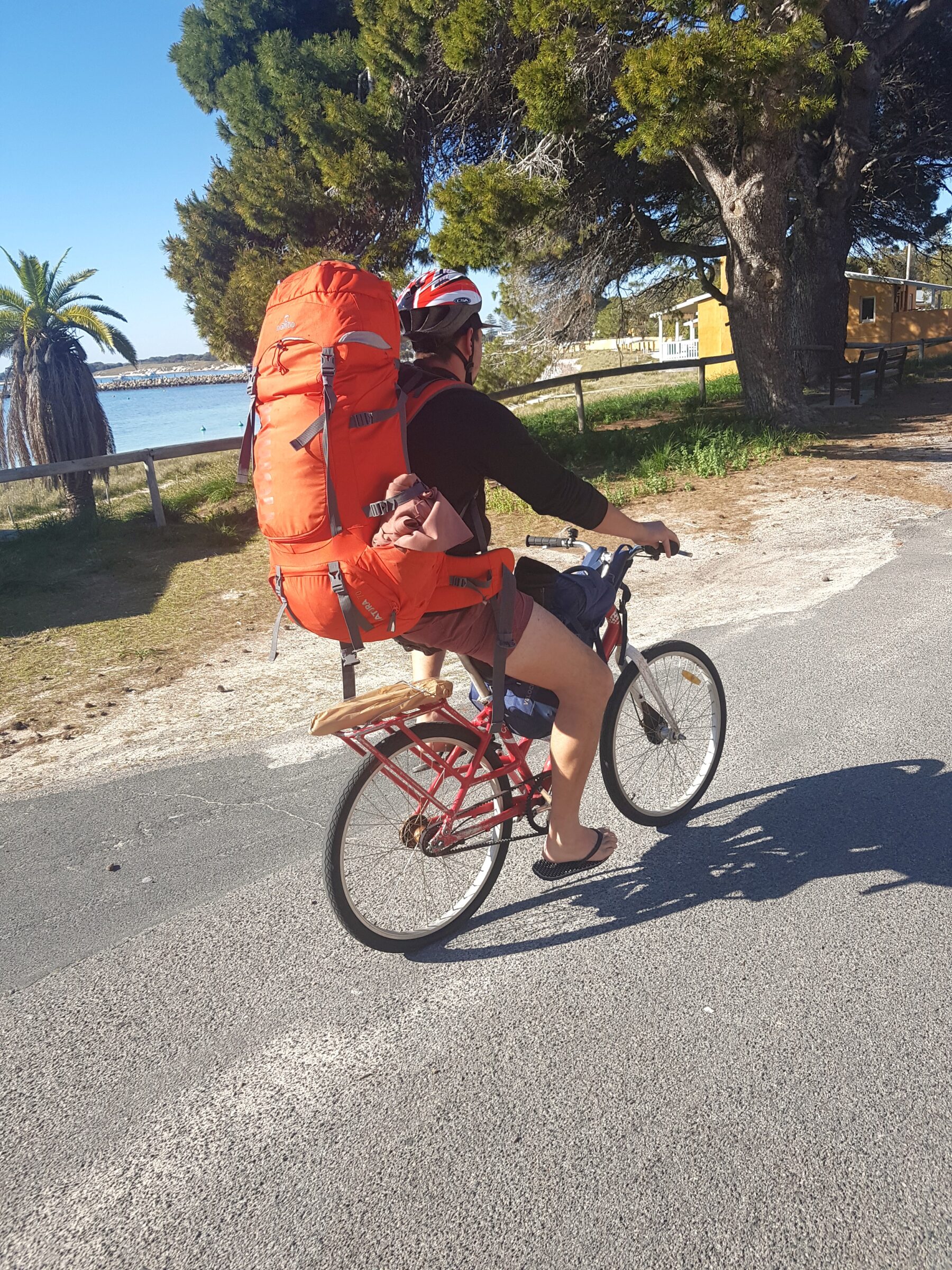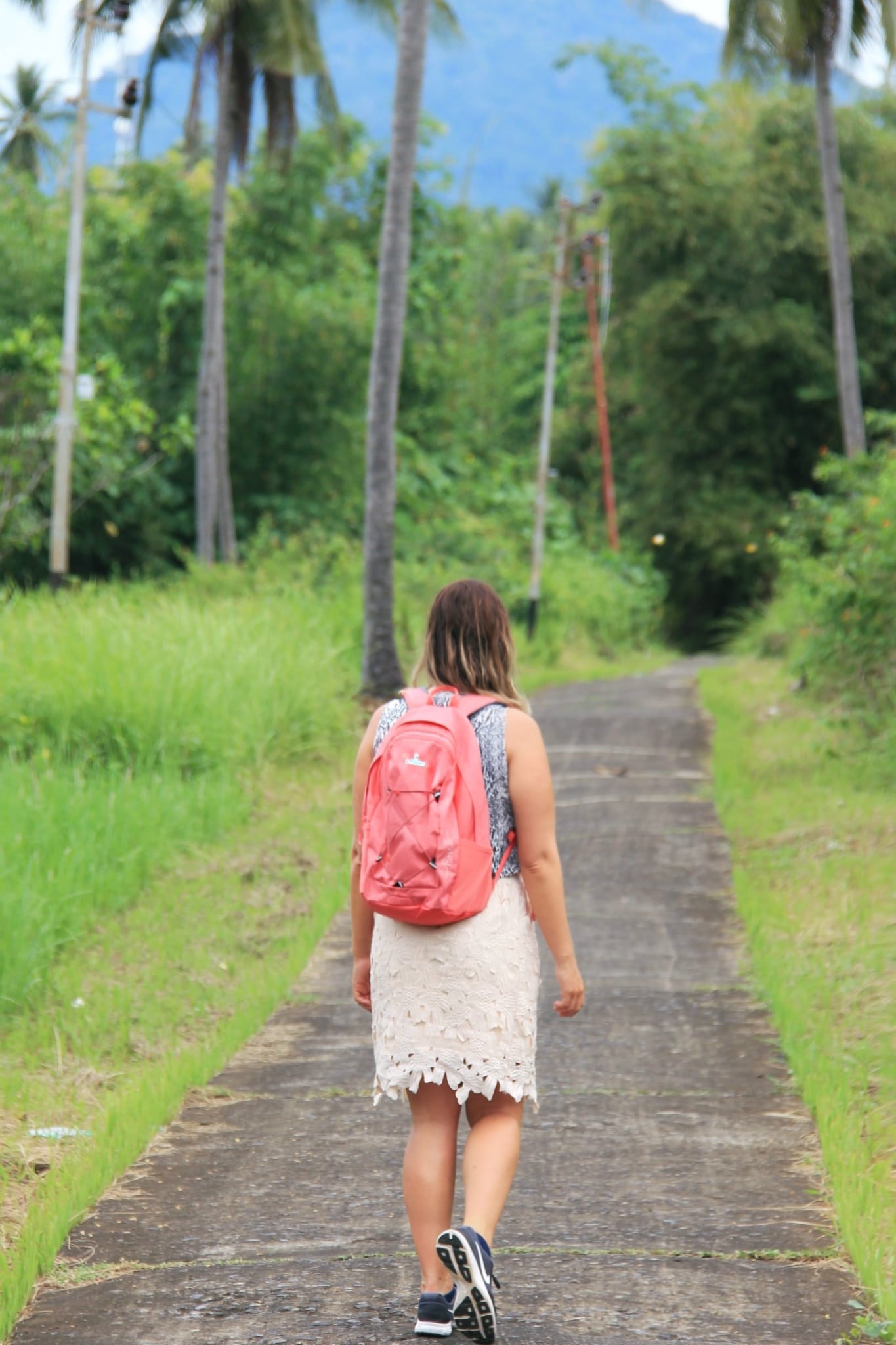Planning long trip or world trip is great fun, but can also be an overwhelming experience. From choosing the right backpack to efficient packing up, there are all kinds of things that you have to take into account. What size backpack should you bring? What should you pay attention to during the purchase and what do you pack? In this ultimate guide we tell you everything you need to take into account when you travel with a backpack, so that you can set off well prepared and confident.

Choosing the right backpack
A good one backpack is very important, especially if you are making longer trips or a world trip. Which backpack is suitable for you is very personal. Therefore, do not rely directly on recommendations and online reviews from others, but take the time to research and compare different options, so that you ultimately choose a backpack that perfectly suits your travel plans. Some important factors to pay attention to when choosing the right backpack:
Size / content
The size of a backpack is expressed in liters and determines how much stuff you can take with you. It is important to consider how long your trip will take and what you will need.
If you plan to go away for a weekend or less, a small backpack of 20-40 liters is sufficient. You can take this as hand luggage and it has enough space for some clothes, camera, water bottle and other personal items. More and more backpackers travel light and opt for a small backpack, also for longer trips. Be critical of what you bring with you, so you don't drag around with things you don't use or wear. If you find that difficult, check out the extensive hand luggage packing list from The Salty Beach Bums.
For trips of two to three weeks, a backpack of 50-60 liters is often chosen. This fits enough clothes, toiletries, shoes and possibly camping gear. If you plan to go on the road for several months, a backpack of 60-70 liters is a good choice. There are even larger backpacks, for example for adventurous expeditions, such as climbing or trekking in remote areas.
Fit
A well-fitting backpack is essential for your comfort when carrying it. Pay attention to the length of the backpack and the adjustability of the shoulder straps and hip belt. We recommend trying out and testing different backpacks before making a choice. Make sure that the shoulder straps have sufficient padding and that the hip belt supports in the right place. The weight should be evenly distributed so that you can carry it comfortably.
Tip: There are special backpacks that are optimized for women.

Material
The material of the backpack determines its durability and water resistance. Nylon and polyester are common materials that are lightweight, durable, and water resistant. It is better to spend a little more money on a good quality backpack than to suffer from broken zippers or tears halfway through your trip. We speak from experience.
I've worn quite a few backpacks and daypacks while traveling in recent years... So I know what works and what doesn't. The Peak Design Every Day 20L Backpack is the ideal dayback for me as far as I'm concerned digital nomads, travel bloggers en photographer. It is an iconic (and award-winning) backpack for daily use and for taking your photo equipment with you.
The bag is light, strong, made of recycled material and multifunctional. By the 'slingshot function' and handy large compartments and sides that can be opened completely, you no longer have to take off your bag to grab your camera.
- Sling shot function
- Determine the format yourself
- Magnetic Closures
- 15" laptop compartment
- Secret pockets for passport and money
- Pricing
Functionality
Every backpack is different, which functions do you find important? For example, some backpacks have separate compartments for storing a laptop, hidden pockets or a hydration system. It all depends on what you want to use your backpack for.
A so-called frontloader backpack is ideal, you can easily unzip everything and access all your belongings. You can only enter a toploader via a zipper at the top. Not so handy if you just need something at the bottom of your backpack. Check immediately whether a rain cover / flight bag is included.
Brand
Although brand names don't always say it all, these backpacks are generally durable and functional. There are a number of backpack brands that travelers are very satisfied with, such as Deuter, Osprey and Nomad (available at Bever).
Tip:: The webshop Nomad also has a good range of quality (and affordable) backpacks from less well-known brands.
Pricing
Buying a backpack is a nice investment, you will soon lose more than 100 euros. Small backpacks are usually cheaper than larger backpacks, although this is not always the case. The price for a backpack is a combination of all the above factors. Choose the right size and fit, regardless of the price range. It is best to try on different brands and types in a store (eg Bever) to get a good idea of what suits you.

Smart packing of your backpack
For many travelers it remains a challenge to get all the stuff in their backpack. Make sure you never pack your backpack too full, because then there will be extra pressure on the zippers and packing and unpacking will be a drama every time. There's nothing more frustrating than having to mess up your entire backpack every time you can't find something. If you want a worry-free backpacking adventure, make optimal use of the available space. Here are some tips and techniques to smartly pack your backpack:
- Make a packing list
Before you start packing, make a packing list of all the supplies you want to bring with you. This way you stay organized and don't forget anything. Do this well in advance (a few weeks) so that you still have time to buy or order things. Be critical and only take what you really need. The lighter your backpack, the less you have to carry on your back. - Roll up your clothes
An effective technique to save space and reduce wrinkles is to roll your clothes instead of folding them. By rolling up your clothes tightly, more clothes will fit in your backpack. - Use packing cubes
Even better is to roll your clothes in packing cubes. These are handy compartments or pockets that you can use to organize your things. Placing items in packing cubes makes them easier to find and prevents them from being scattered throughout your backpack. For example, put all the pants in a separate packing cube, all the shirts in another and put your swimsuit in yet another packing cube. Use different colors so that you can easily find everything in your backpack. - Use compression bags
Another option to save space and keep an overview is compression bags. You put your clothes in a bag and then suck the air out, making it more compact. This works especially with clothing, sleeping bags, jackets, etc. - Distribute the weight evenly
Make sure you distribute the weight in your backpack evenly. Place heavy objects, such as you sleeping bag of hiking boots, close to your back and as low as possible to maintain the center of gravity of your backpack. This helps with good balance and stability while wearing. - Use the outside pockets
Most backpacks have two compartments on the side – both left and right. These are of course there for a reason and are extremely useful for, for example, putting in a water bottle, towel, jacket or snacks. Some models have a pocket with a zipper on top, where you can put a notebook, travel guide or toiletry bag. This way you don't have to unzip your backpack every time. - Stay organized during your trip
Try to keep your backpack as organized as possible, you will do yourself a great favor. It helps to always store things in the same place. Is your entire hotel room full of clothes after a few days? Take the time to tidy everything up again, otherwise your backpack will become a messy mess and you will lose your belongings. - Keep valuables safe
Store passports, money and electronics safely in a lockable compartment in your backpack. Often there are 'hidden' compartments and zippers, where you can store valuables. It is also a good idea to make copies of important documents and store them separately in case of loss or theft.
Tip: make digital copies of important documents and send them to your email.

Also read: Camping? You must take these 5 must-haves with you!
Essential items for your backpack
In addition to your backpack and basic necessities, there are certain items and accessories that make your trip a lot more pleasant and easier. We always take the items below with us wherever we go.
- GPS tracker
Your backpack contains everything you need for your trip, you should not think about losing it. Unfortunately, it happens more often than you think that an airline loses your backpack after checking in or that someone else accidentally takes your backpack. Buy one suitcase gps tracker for in your suitcase or backpack to prevent this. - water bottle
Take your own sustainable water bottle on a trip and stay hydrated. You're doing good for the environment and save money because you don't have to buy disposable bottles. A stainless steel water bottle is a good choice. Some water bottles have integrated filters for purifying water, for example the hugely popular ones lifestraw. Others are collapsible or have insulated walls to keep your drink cool or warm. - Power Bank
A Powerbank is a portable charger that you can use to charge your electronic devices, such as your smartphone, tablet or room, to charge when you're on the go and don't have access to a power outlet. You always have a spare battery at hand. Ideal for long journeys, trekking or in remote areas. - Quick-drying towel
A hammam towel or quick drying towel is a must-have for backpackers. These towels are lightweight, compact and dry quickly, making them ideal for travel. They take up little space in your backpack and you can use them after showering, for the beach or as a blanket when you are cold. - Head lamp
A headlamp is a handy accessory, especially when camping or when you spend the night in countries where the power goes out regularly. Also useful during an evening walk or if you sleep in the middle of the jungle. - world plug
Wherever you travel, with one world plug you can charge your devices anywhere. There are different sockets and voltages in every part of the world. You're good anyway with a world plug, so put it in your backpack without thinking.
Conclusion
We hope that with this information you choose a good backpack that you will enjoy for years to come. The more often you travel, the faster and easier it is to pack your backpack. On to many backpacking adventures!
Also read: 5x luxury backpacks and gadgets for demanding World Travelers













